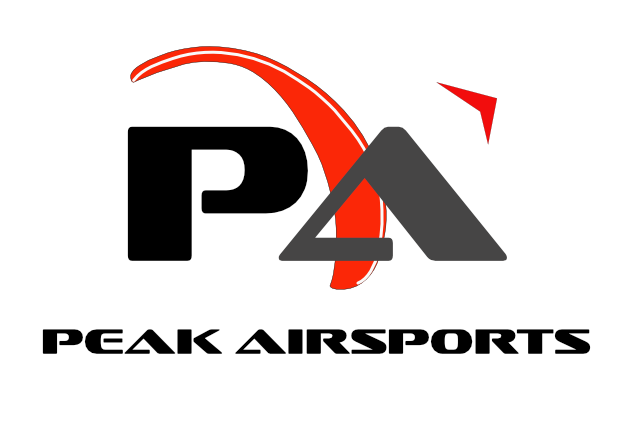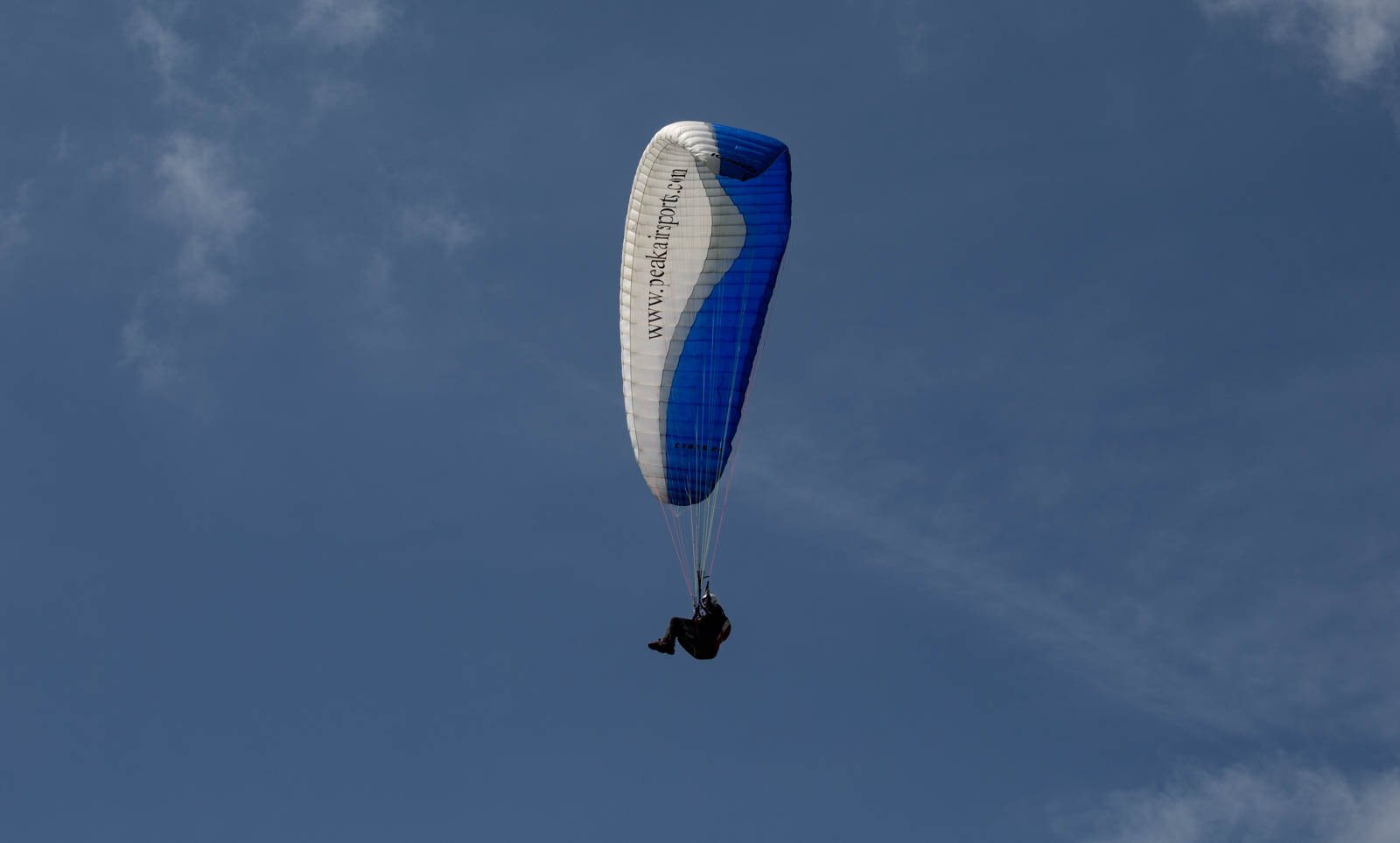
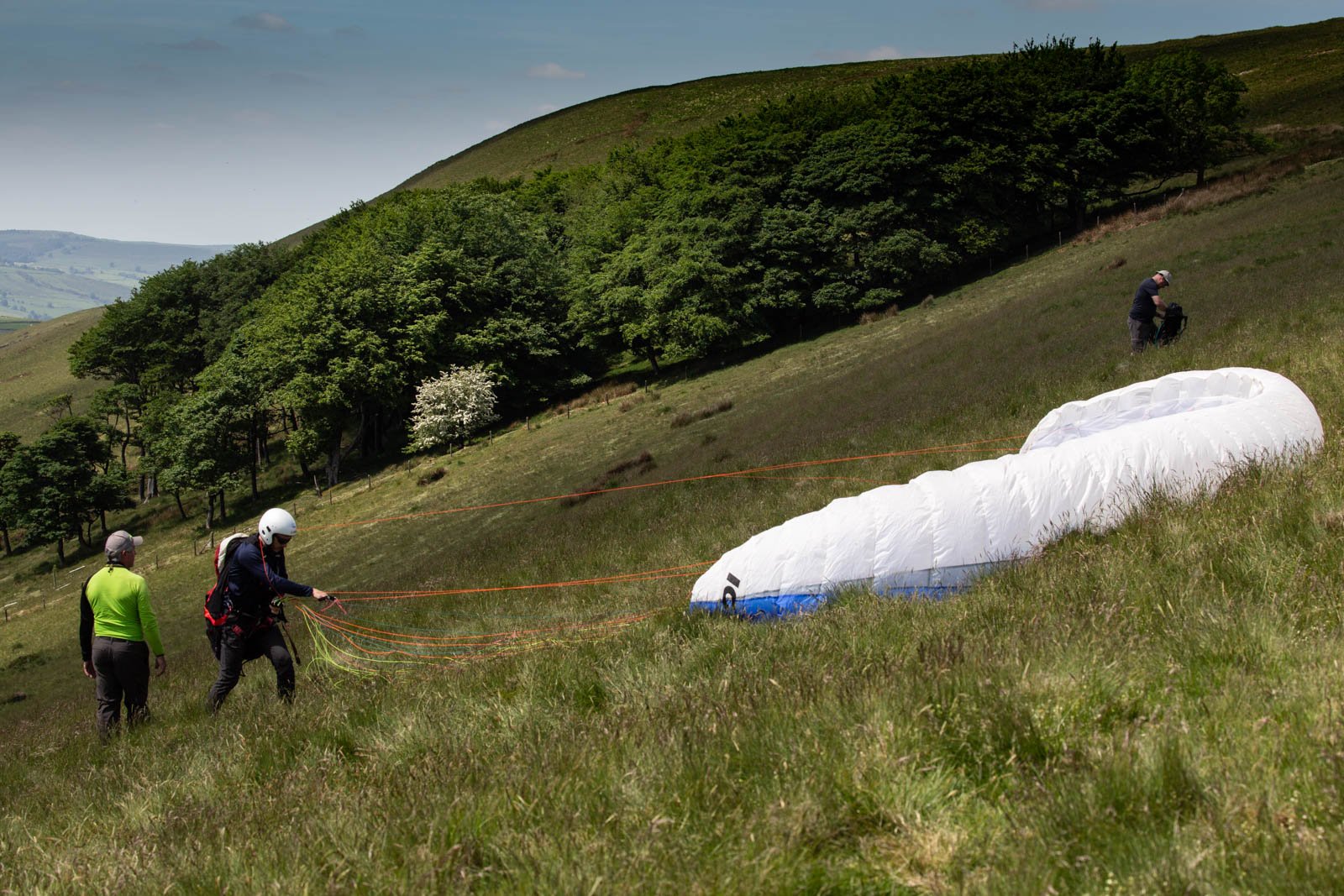

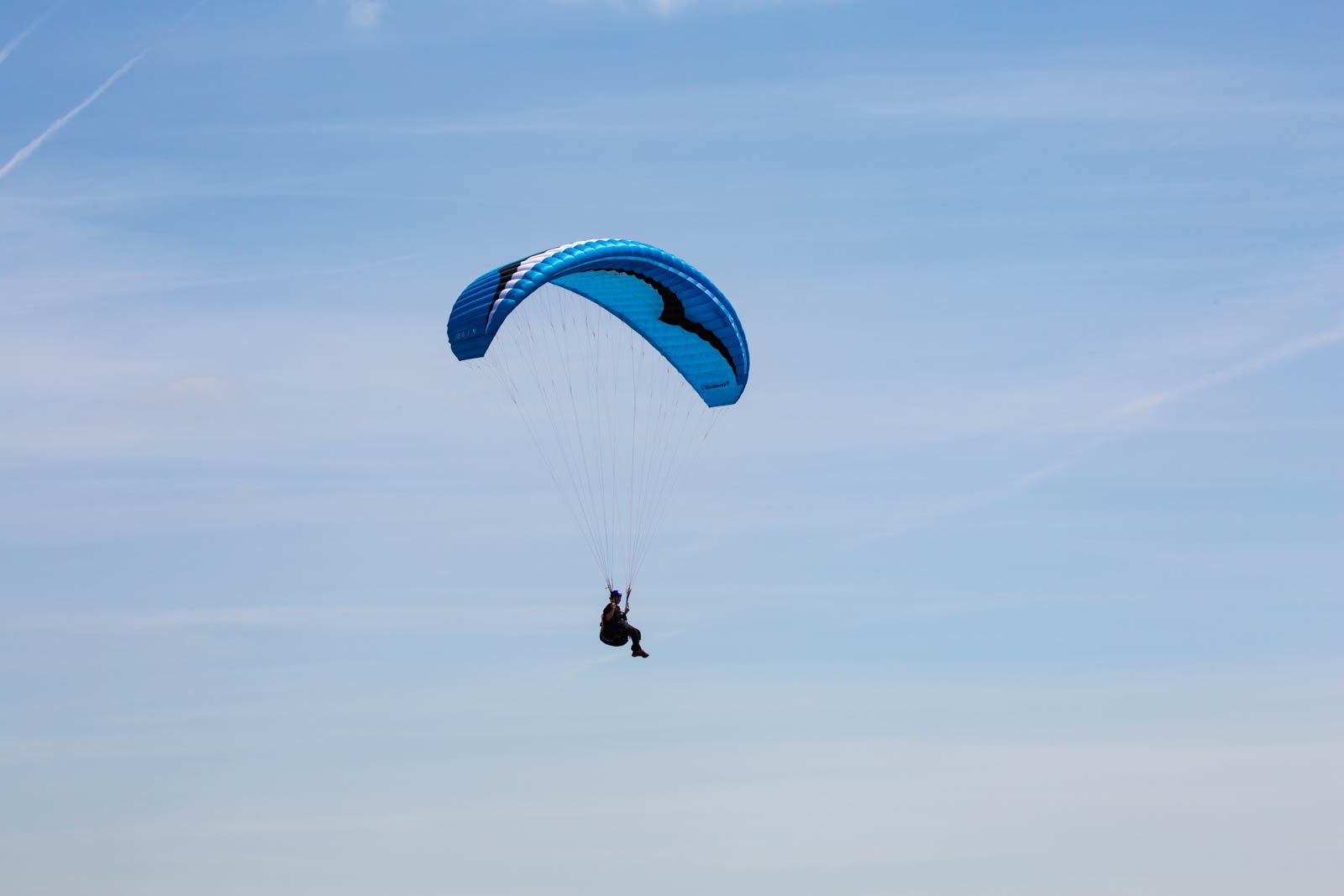
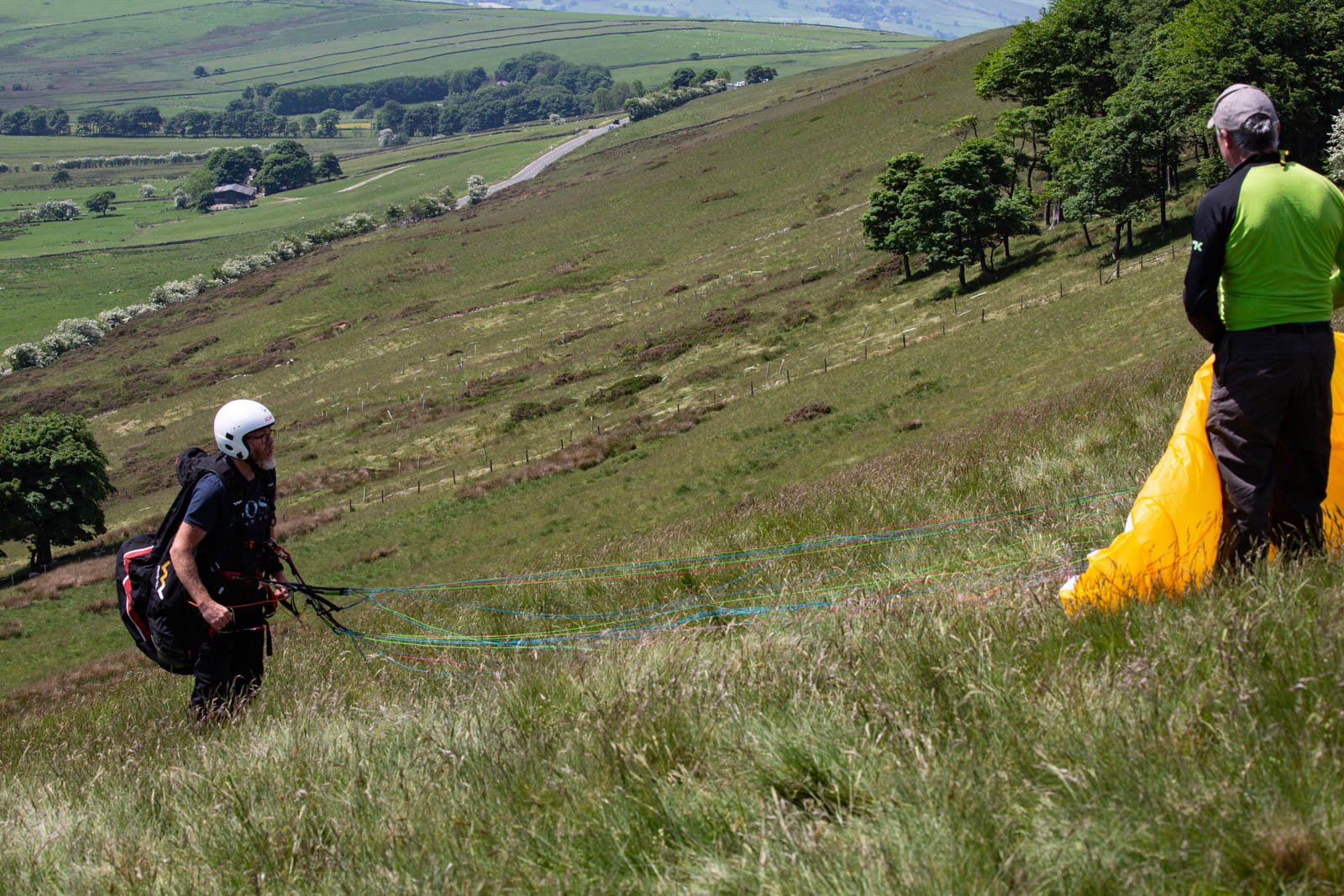

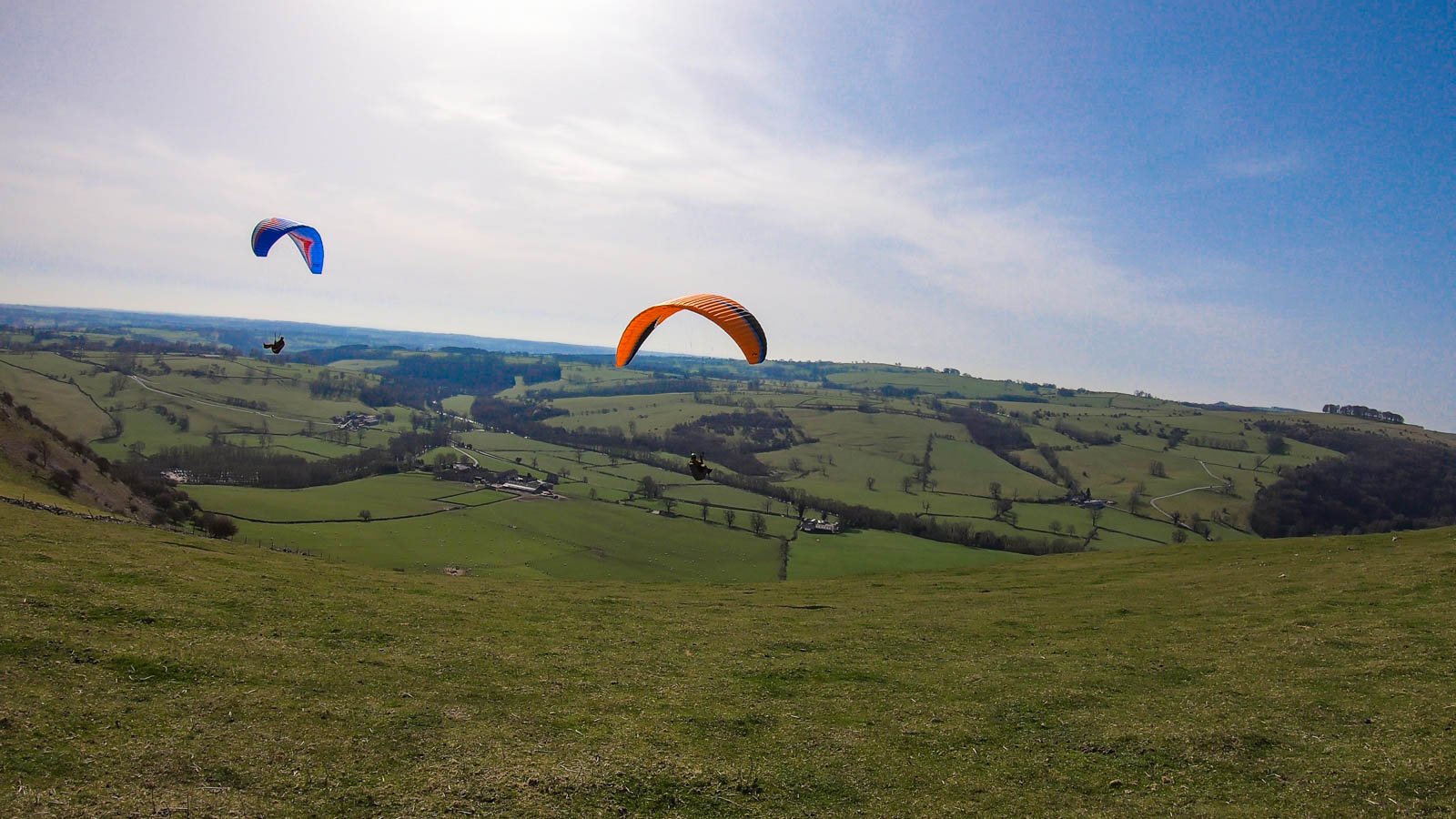
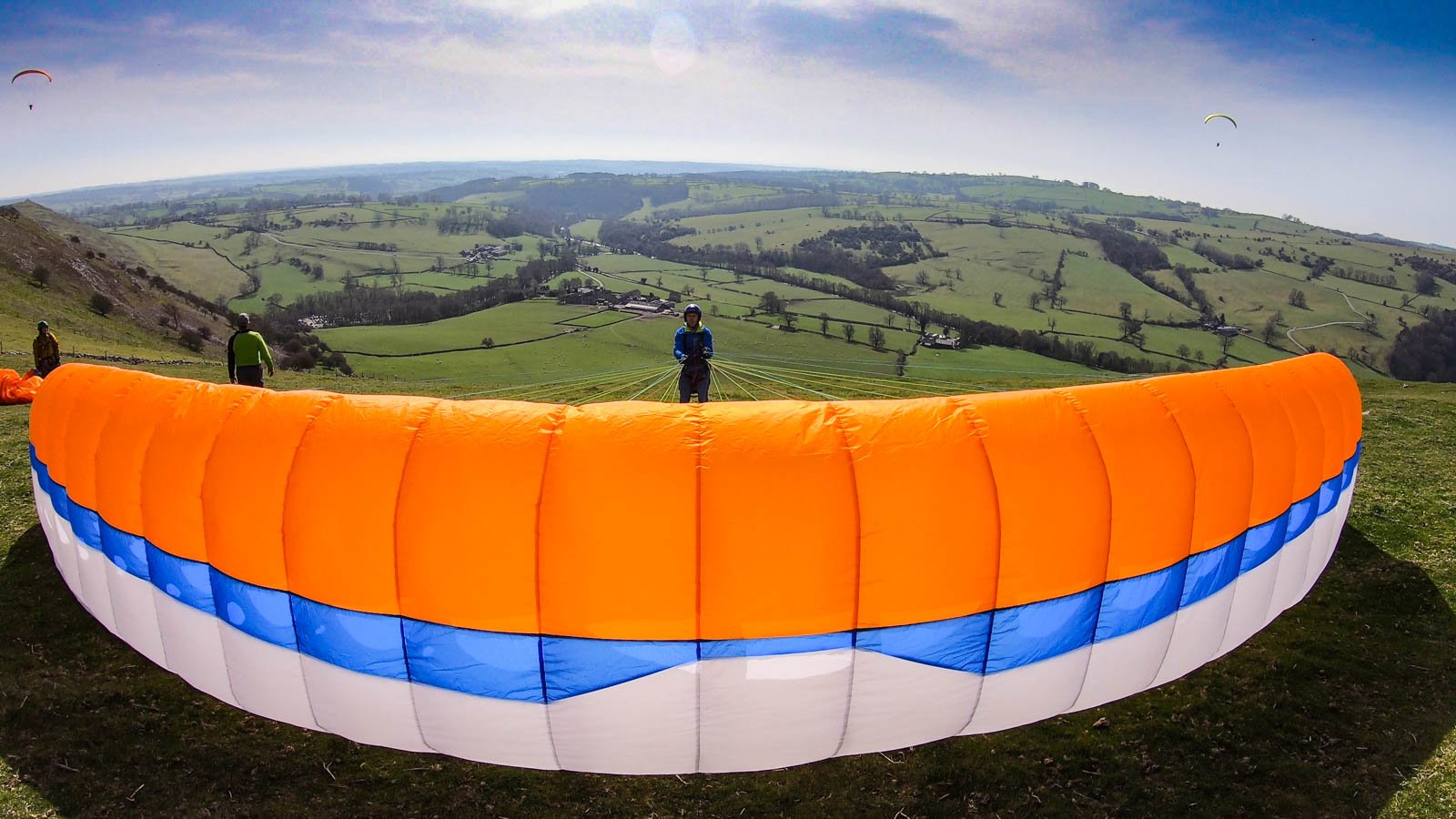
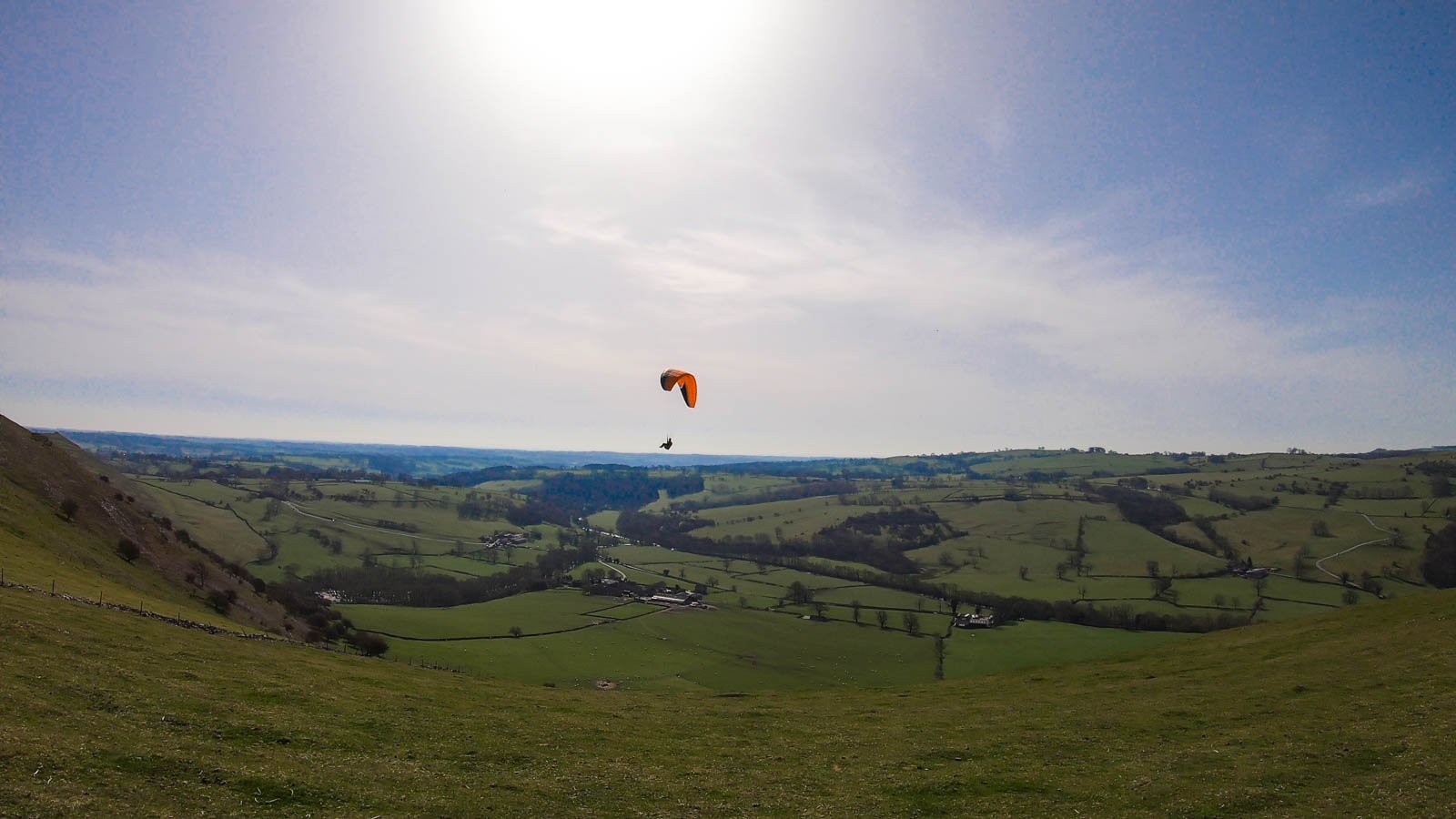
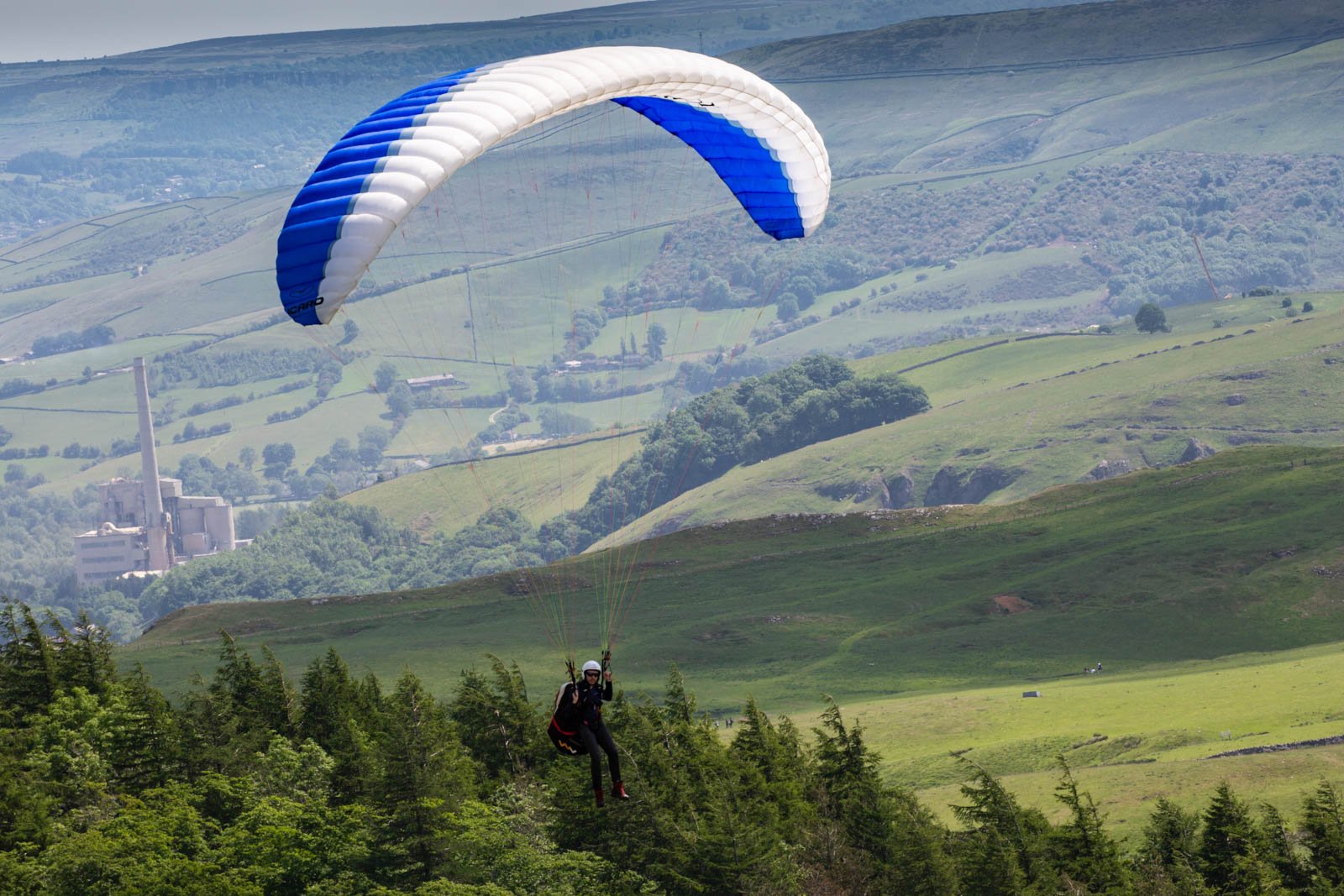
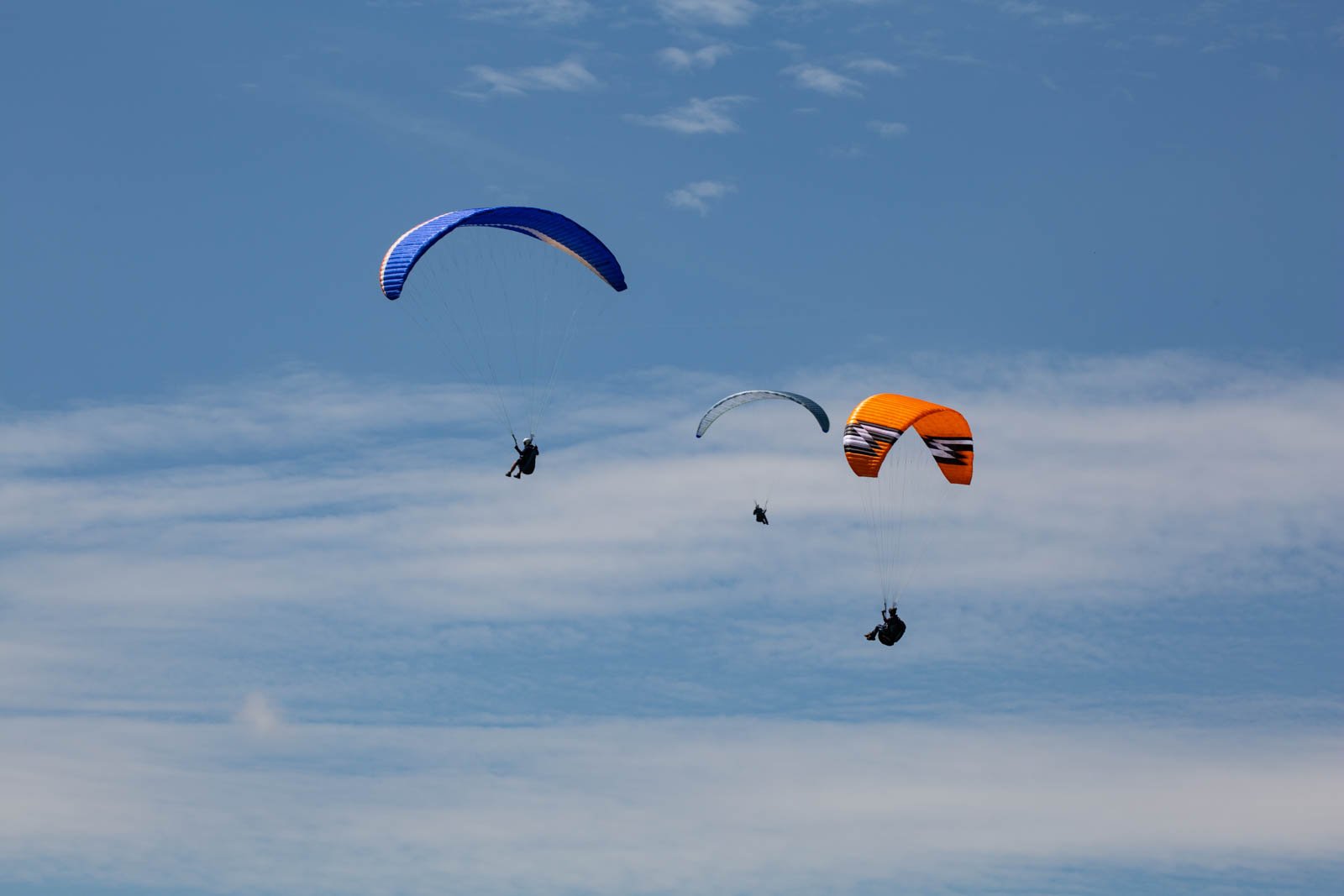
PEAK AIRSPORTS PARAGLIDING COURSES
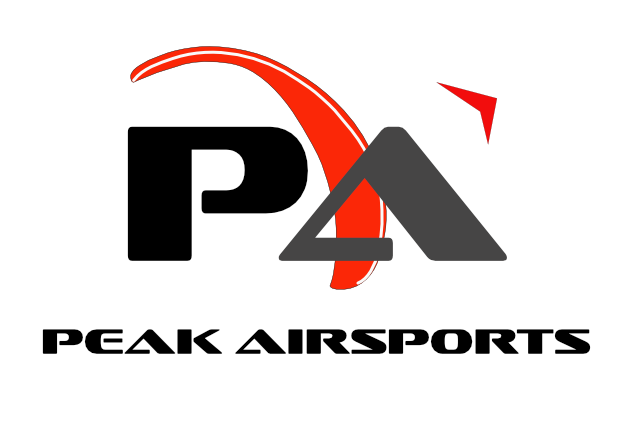
PARAGLIDING TUITION WITH PEAK AIRSPORTS
Join us for the start of something truly amazing!
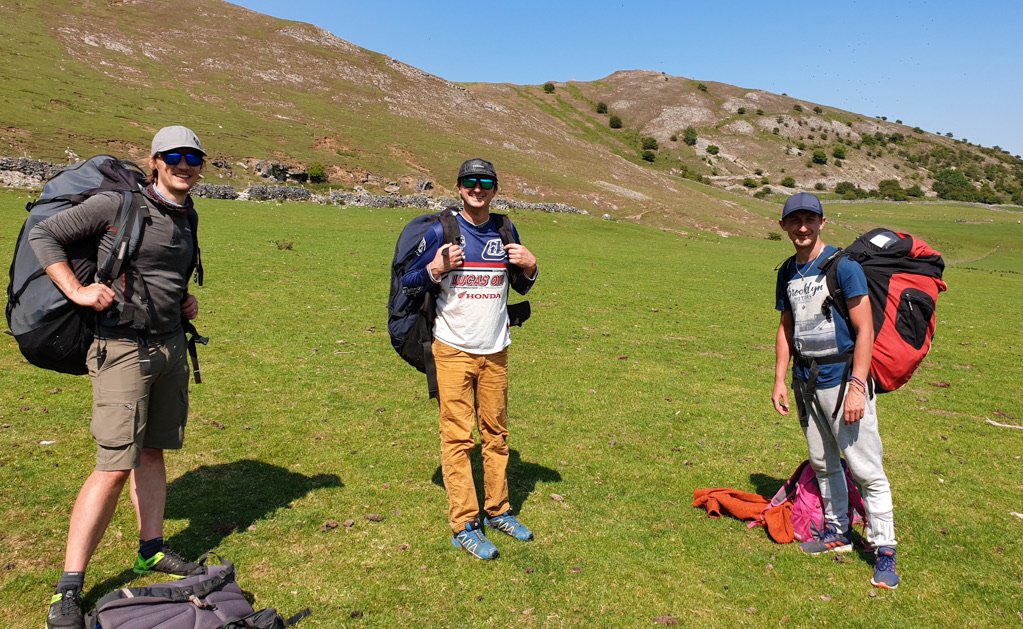
We offer expert paragliding tuition that will allow you to train/fly as safely as possible up to, and sometimes beyond, the British Hang Gliding & Paragliding Association (BHPA) novice level.
We have included the most important information that you need to start planning your adventure below.
Once you have looked at it give us a call so that we can discuss any questions that you may have and chat about tailoring the course to your specific needs.
We have included the most important information that you need to start planning your adventure below. Once you have looked at it give us a call so that we can discuss any questions that you may have and chat about tailoring the course to your specific needs.
Making A Start!
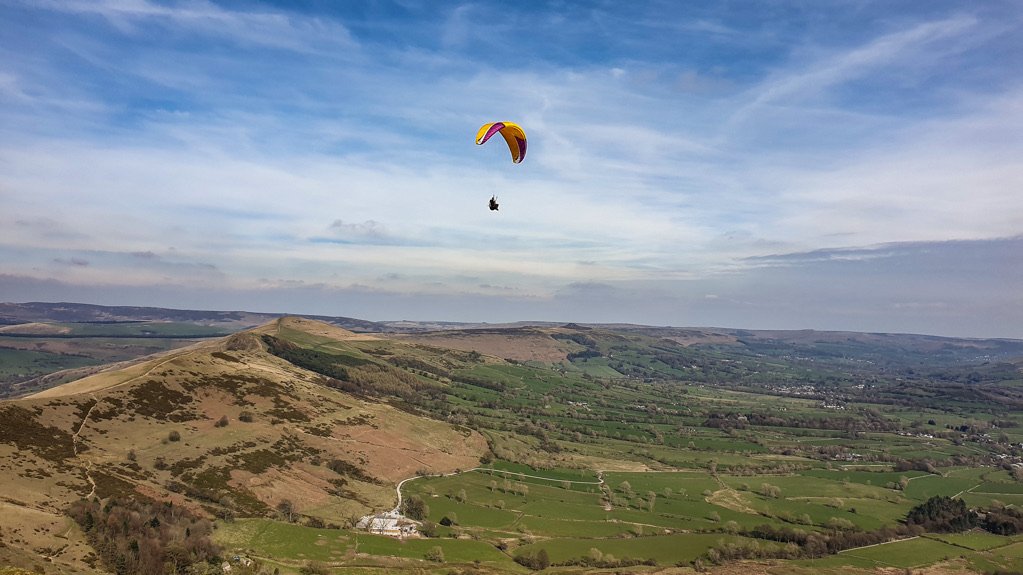
Your aim will be to qualify and fly from the hills completely unsupervised along with other trained pilots. To achieve this you need to complete two certificates, the Elementary Pilot Certificate (EPC) and the Club Pilot (Novice) Certificate (CPC)
Both the EPC and the CPC have practical and theory components which are described below.
It usually takes around 9 days to complete with the expectation of 4 days EPC and 5 days for CP but will be tailored to suit the individual.
Peak Airsports recognises that taking up our sport does require an investment and has therefore developed a paragliding ‘taster day’ which is run as a course to allow you to experience the sport for yourself, before deciding if you want to take it further.
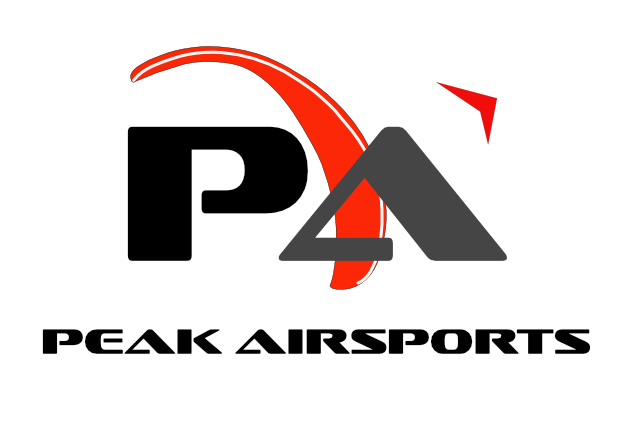
Since the taster day is primarily aimed at those who are seriously thinking of taking up the sport to help decision making, the cost will be carried over for those that decide to enrol on the complete course.
The content of the day course can be found on the 'Taster Course' page.


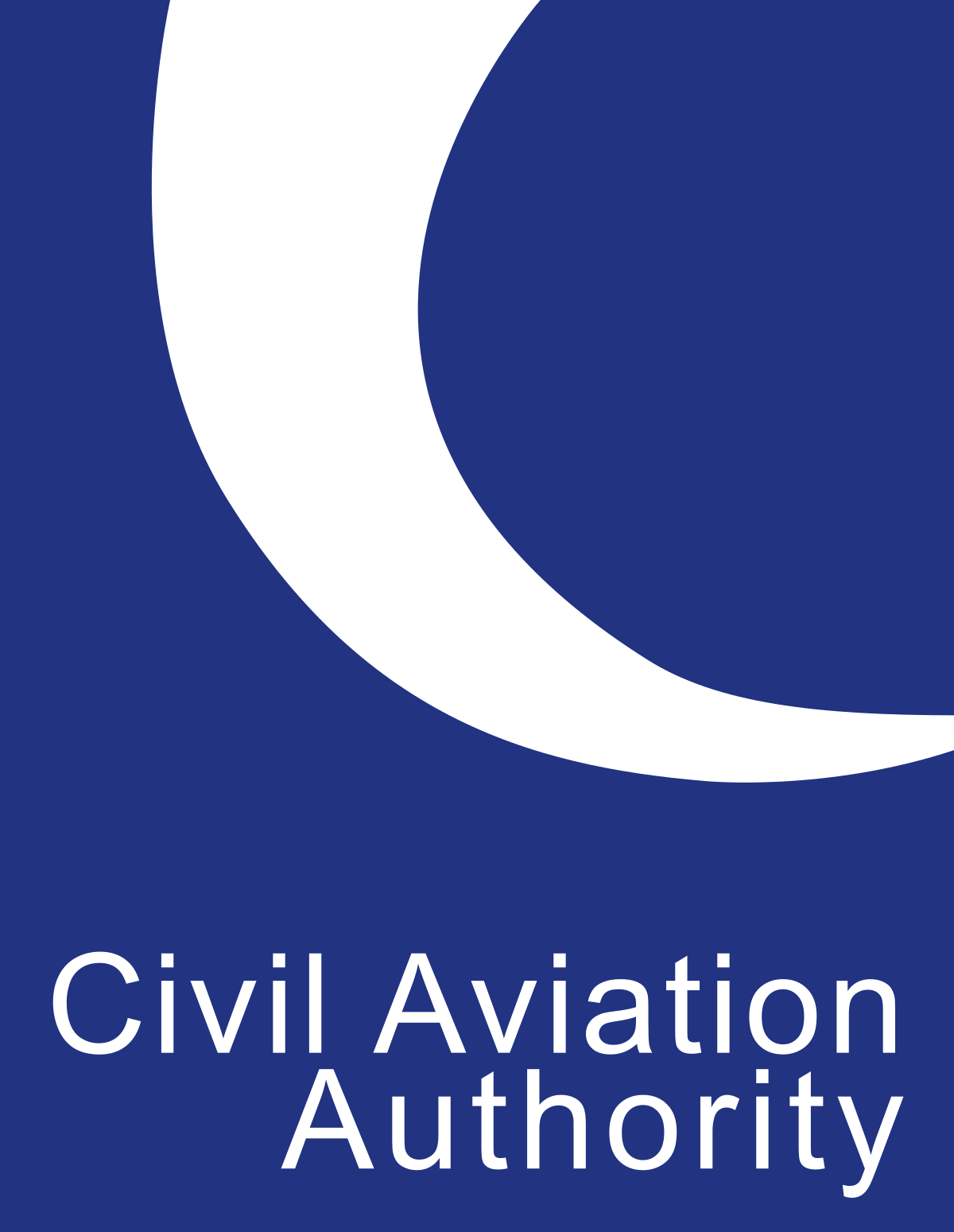
There is also a mandatory requirement to become a member of the BHPA before you start training, this is mainly, but not solely, for third party insurance purposes.
If you enrol on our day taster course, the BHPA daily membership fee is already included. For our other courses BHPA membership needs to be taken out and you will have options on the duration of membership dependent on the course/s.
The costs and options for these are on our 'Prices' page and includes an initial (one-off) joining fee. BHPA membership is arranged on your first day of training as part of our administration process.
Our age limits are 18 to 65 years and a weight limit of 95kg (15 stone) for all courses.
The Elementary Pilot Certificate (EPC)
The Elementary Pilots Certificate (EPC) is the first level of BHPA proficiency in paragliding tuition, which you must complete before progressing on to the Club Pilot (Novice) Certificate and takes on average three to four days (subject to the student and weather) and is great fun!
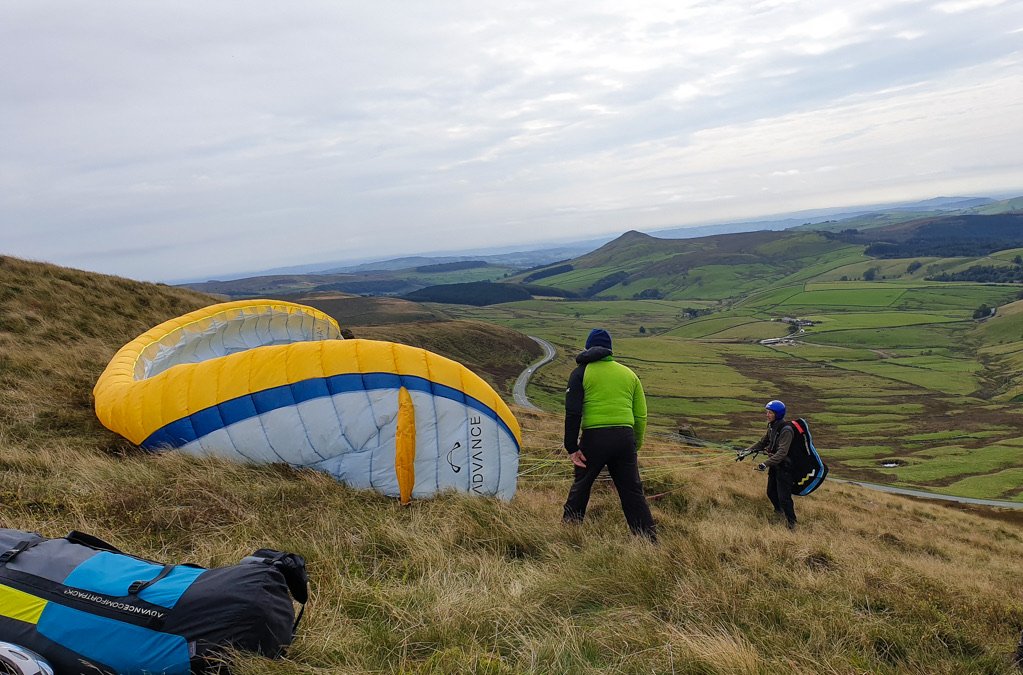
You will progressively work through our personal BHPA ‘Student Training Log Book’ covering all the necessary stages of the BHPA Elementary Pilots Certificate Syllabus and includes theory, emergency landings, equipment inspection, ground handling, take-off and good inflight control and ‘gentle’ stand - up (on your feet) landings.
Then the fun really starts, with low flights and progressively and safely working our way up the slope, before being introduced to turns and high flights with normal ‘stand-up’ landing techniques.
At some point on the course a multiple choice theory exam (with lectures) needs to be completed and passed (not hard to do) and ultimately an assessment of the student pilots’ ‘attitude’ by the Senior Instructor.
Once this is completed, you can then go on to start your ‘Club Pilots Certificate‘ with us.
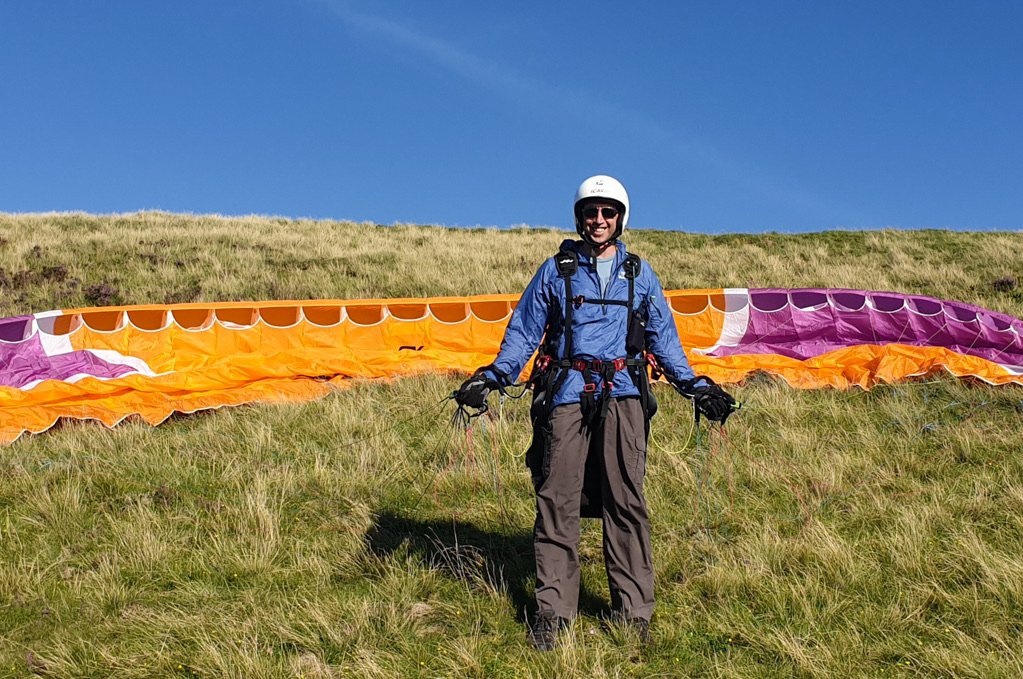
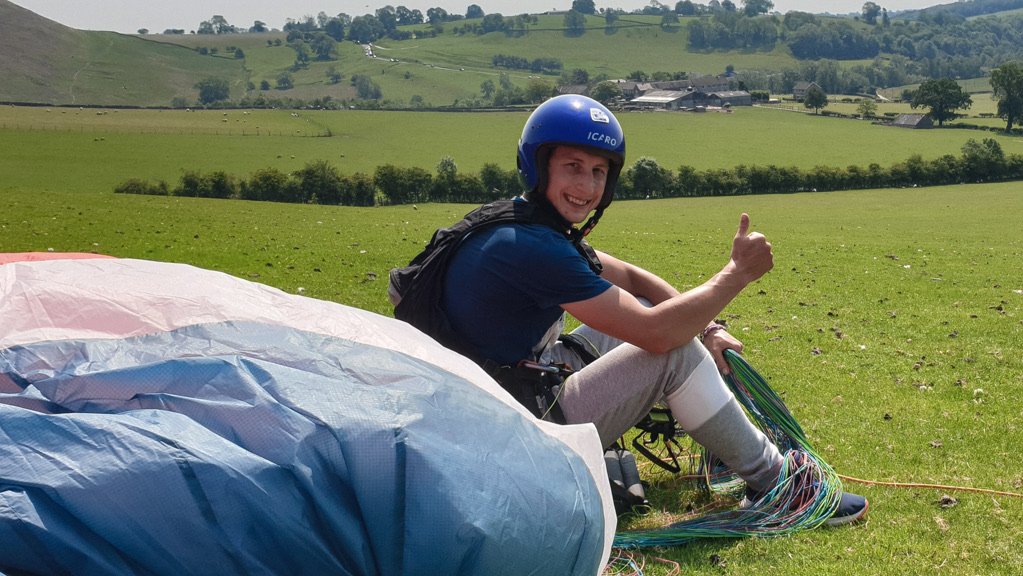
After a jam packed day of fun and learning, you pack away your wing.
You will have a thorough de-brief and your progression logged before going home with a big smile on your face, keen to start your next day’s training - game on!
Peak Airsports Elementary Pilot Course (EPC)
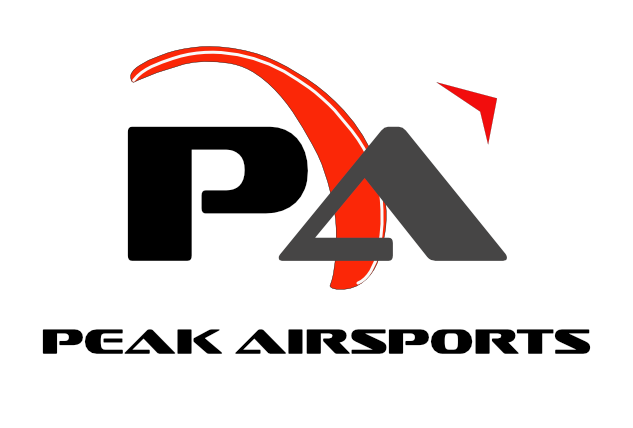

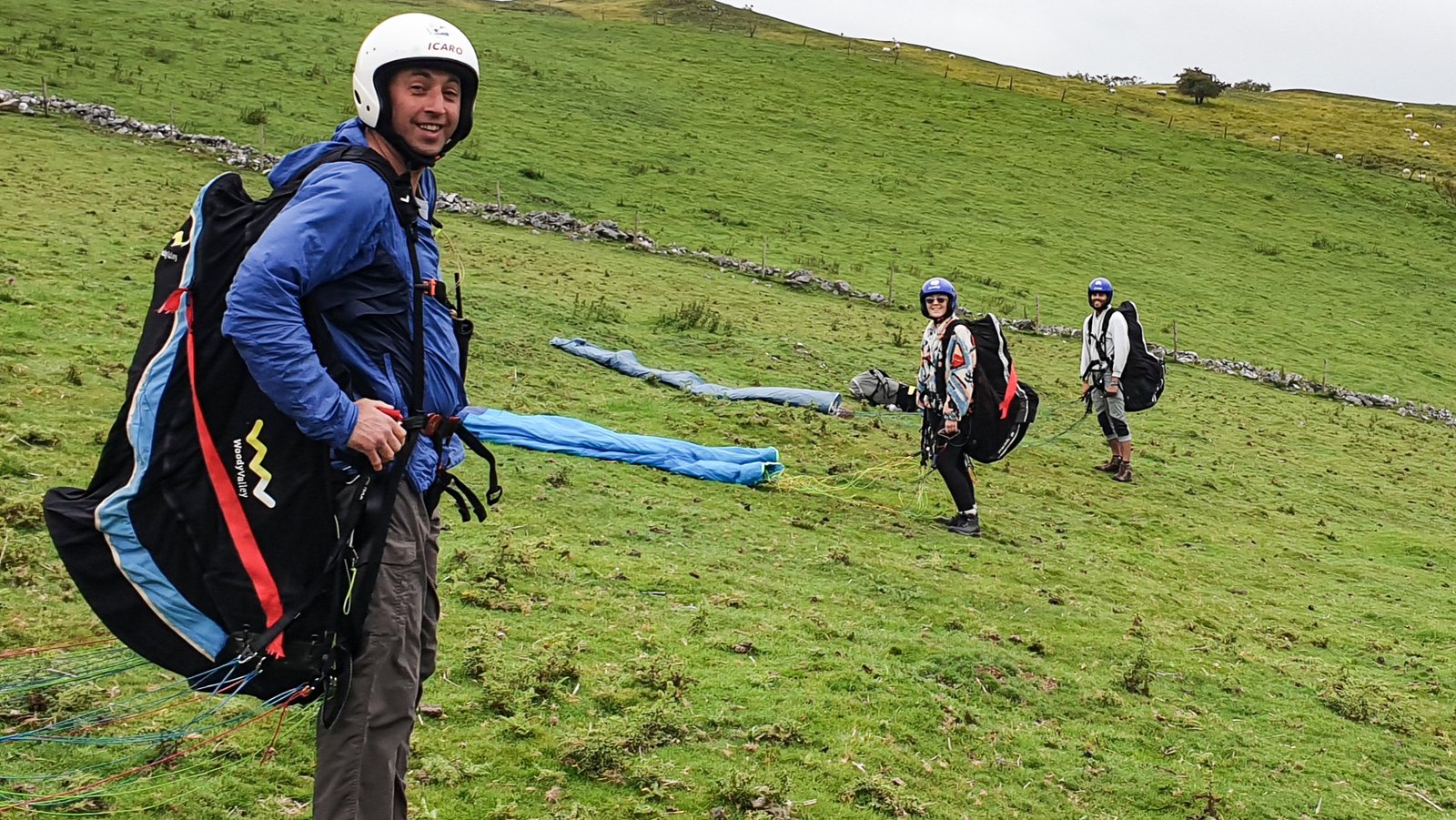
EPC SYLLABUS
Phase 1: Ground Training
- Introduction and administration
- BHPA membership
- Risk discussion
- Site discipline & school rules
- Students health/medical conditions
- Training Programme/Pilot Rating Scheme
- Student Training Record book
- Appropriate clothing/footwear
- Site assessment
- Daily briefings/site hazards/airflow hazards/weather assessment
- Equipment introduction
- Glider & Harness
- Avoiding and minimising injury
Phase 2: Preparation/Ground Handling
- Briefings/pre-flight checks
- Taking off and landing into wind
- Airspeed control and the landing flare
- Preparation: putting on the helmet and harness, pre-flight checks
- Running with the wing: learning to flare/stall the wing on landing and post-flight control
- Directional control: making turns whilst running with the wing on the ground
Phase 3: Getting Airborne
- Practice taking off
- Making small flights (typically no more than 5 metres ground clearance with tethers)
- Controlled landings
Phase 4: Flight Exercises
- Eventualities briefing: The need to prepare, before takeoff, plans to deal with the unexpected
- Commands and Communications briefing: This includes briefing on signals, bats, radios, verbal, as appropriate
- Responsibilities Briefing: From this point the student becomes a pilot in command and will be in a position to determine the course of the flight. The student must clearly understand their level of responsibility for the safe conduct of any flight
- Maintaining course and airspeed; including flights of 15 metres/50 feet maximum
- Introducing turns of up to 90 degrees
- Completing simple flight plans; involving further ground clearance/height, unassisted launches, controlled landings (within a designated area)
Phase 4: Theory & Examination
- Lessons and personal study
- Meteorology
- Principles of flight
- Rules of the air and air law
- Sit the Elementary Pilot Examination and Pass!
- You are now an Elementary Pilot in Paragliding!
You can now start the real flying and go on to complete your Club Pilot Course with us:-).
Only after your CPC Notice course has been completed can you go out and fly without your instructor / school.
PLEASE SEE OUR 'SAFETY' PAGE FOR IMPORTANT SAFETY INFORMATION ON THIS COURSE.
The Club Pilot Certificate (CPC)
Students are expected to purchase their own equipment for the CPC. Peak Airsports has all the equipment required, new and second hand for sale and gives the best deals to its own students (always).
Please note Students are liable for damage to any school equipment that is used by them.
Peak Airsports Club Pilots Certificate (CPC) for paragliding tuition, follows on from the Elementary Pilots Certificate and involves the kind of flying that all trainees really aspire too.
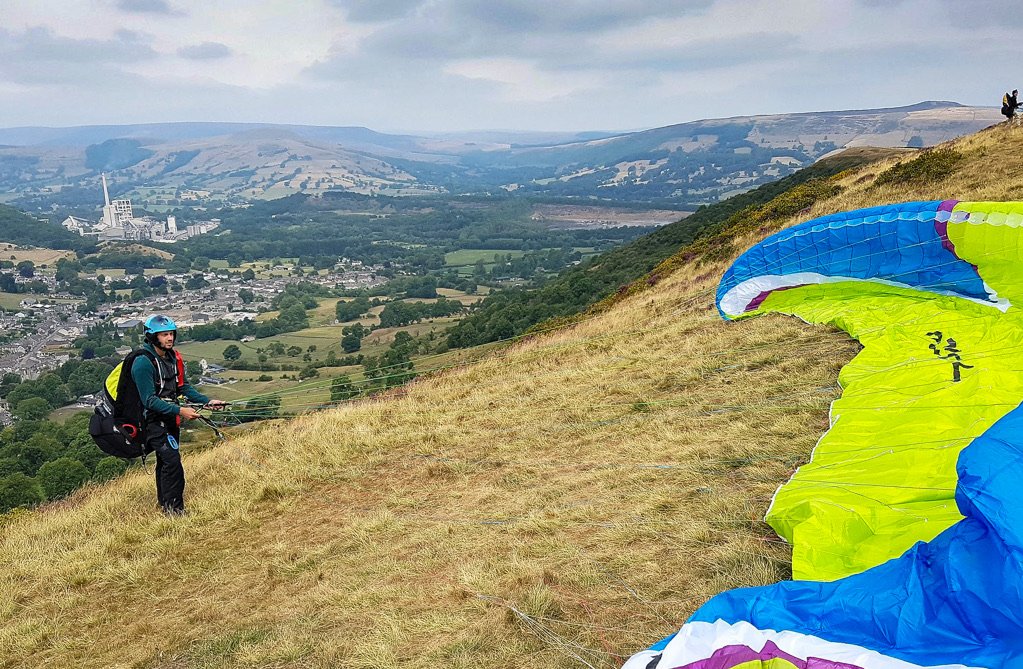
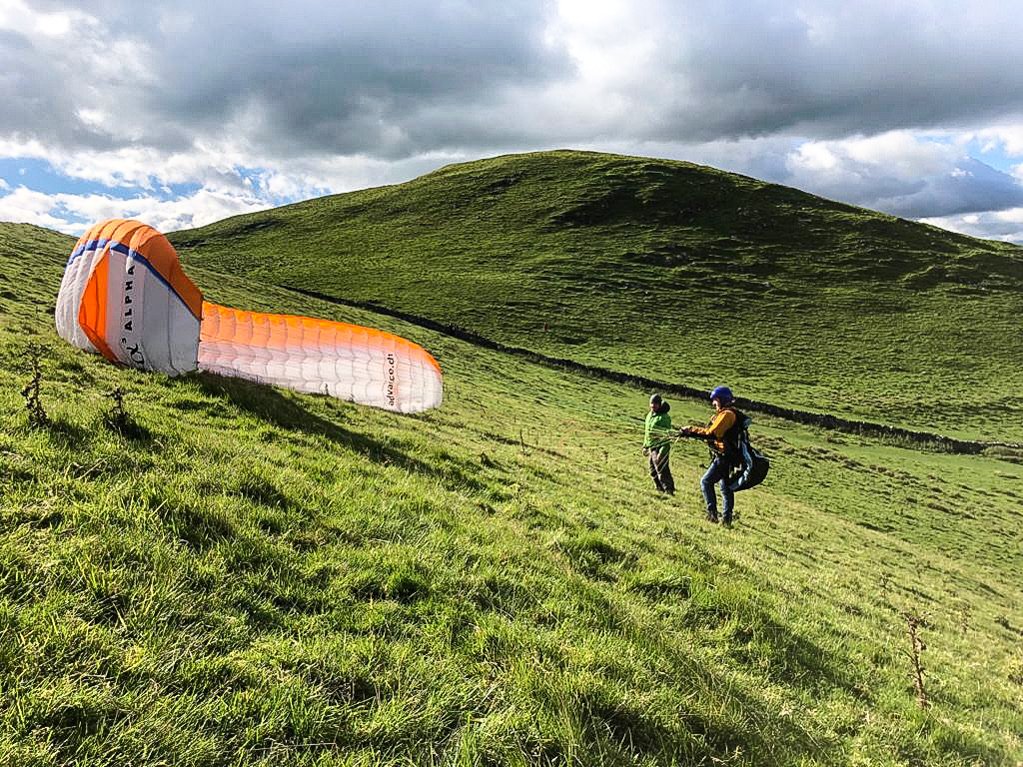
Whilst the Club Pilot Certificate course involves a lot of flying and airtime, we will be revisiting some of the earlier EPC ‘ground handling techniques’ as good glider control on the ground makes for a safer pilot in the air.
You will have spent three or four days during your Elementary Pilot Certificate (EPC) walking up the hills and flying down - all great fun! With the CPC course you will learn to ridge soar (fly like a bird) and gain height to fly above take-off height and possibly land back at the top of the hill again!
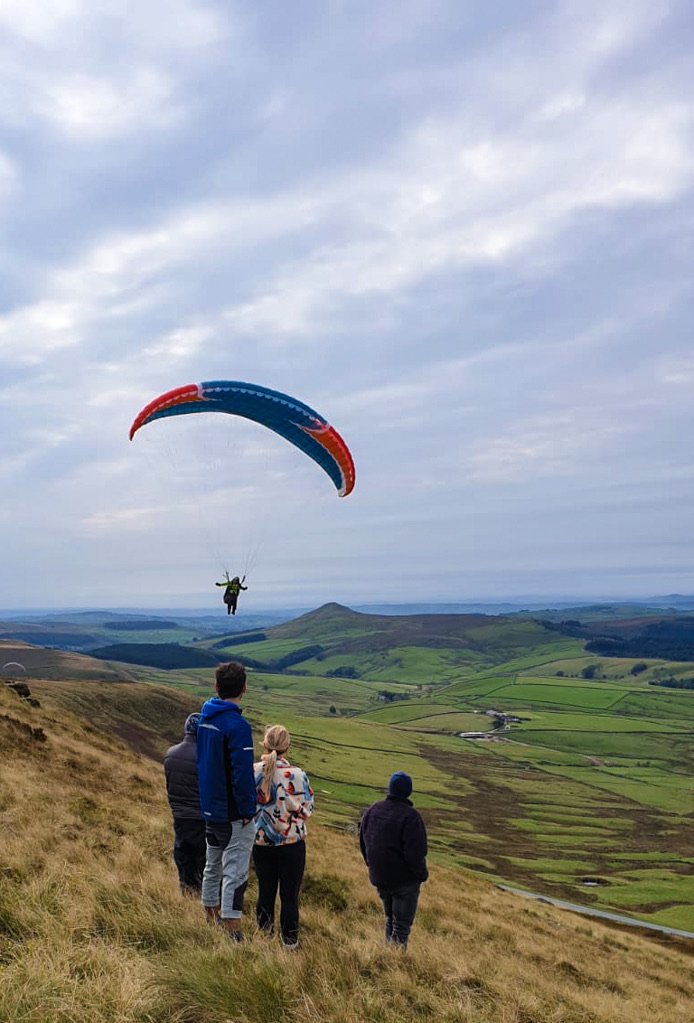
It is possible to complete the tasks for the BHPA Club Pilots Certificate Syllabus in four to five days or so (in good conditions). During which you will get to know the local club coaches (while with the school instructors and local pilots and steadily integrate into the local club environment).
Please note; Peak Airsports philosophy is not to get a student through their course ‘as quickly’ as possible, but to make sure that both the student (and instructor) are happy to go on to fly ‘unsupervised’ competently and safely for years to come.
Peak Airsports students are regarded as good, safe novice pilots and normally have ‘hours’ of airtime while being trained within our school (not minutes like some other schools in the area, fact).
Safety and school equipment
Please note that students are expected to purchase their own equipment for the CPC. Peak Airsports has all the equipment required, new and second hand for sale and gives the best deals to its own students (always).
Please also note that students are liable for damage to any school equipment that is used by them.
'.......even a ‘qualified pilot’ should never stop learning and strive to be a better pilot, always.......'
Mark Bosher
Peak Airsports Club Pilot Course (CPC)


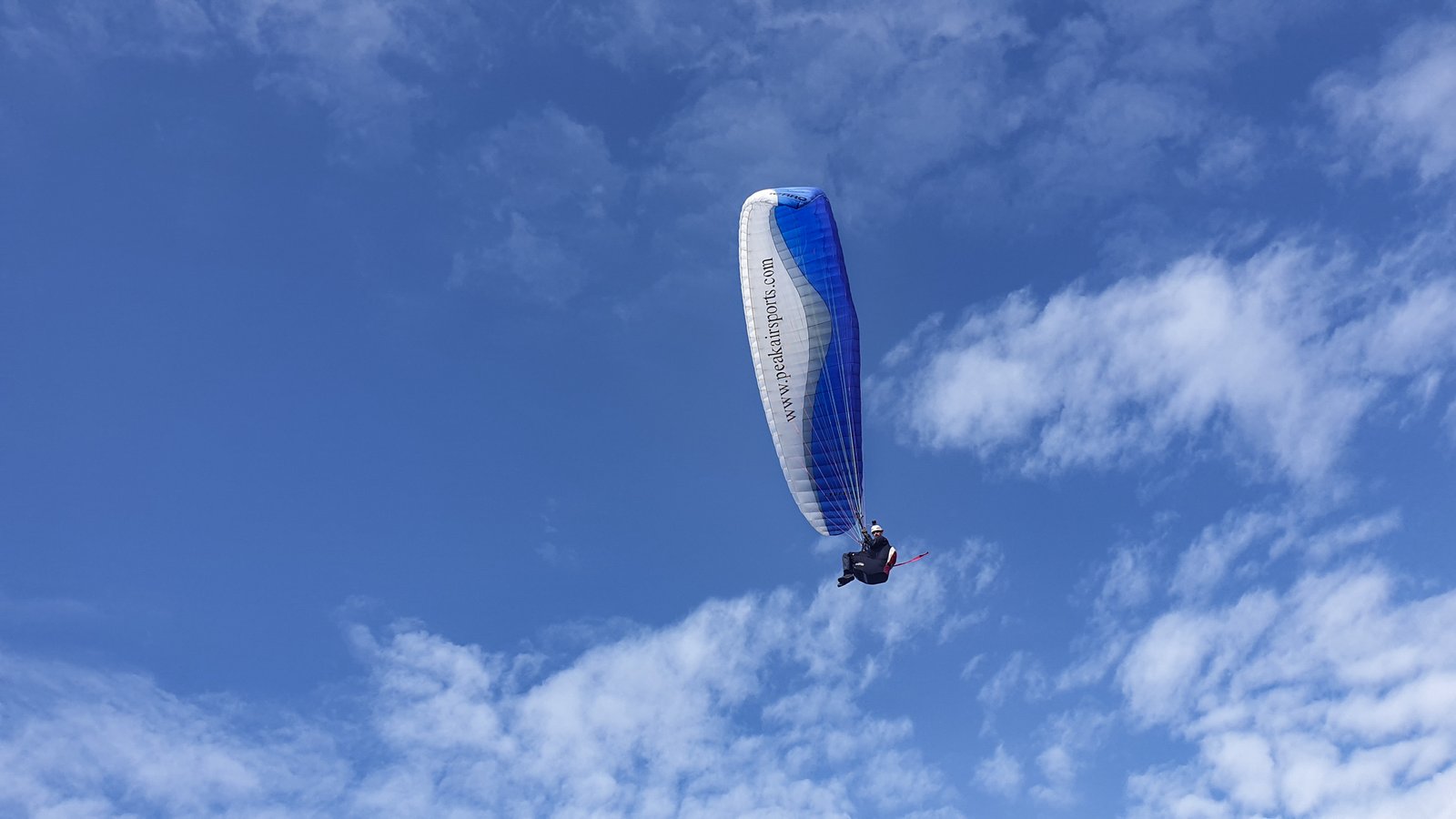
CPC SYLLABUS
Phase 6: Pre-soaring
- Theory of soaring flight
- Further develop knowledge on weather/site assessments
- Flight planning
- Rules of the air
- 180 degree turns
- The student will demonstrate competence at unassisted launches and turns up to and beyond 180 degrees.
- Planned Approaches
- The student will demonstrate competence at controlled landings in different conditions and using different techniques, within a designated area.
Phase 7: Soaring
- Soaring flights (5), utilizing ridge lift to maintain and/or gain height.
- Top Landing Theory (optional practical): Learning safe and controlled top landings on at least two sites in different conditions
- Flying with others, putting the Rules of the Air into practice in the company of other aircraft
Phase 8: Improving Skills
- Exploring the speed range: Speed to fly concept; fast and slow flight
- Accelerator Systems: Learning to use the speed bar and trim setting devices
- Forward Launching: Further development of forward launching skills, preparation for forward launching on Alpine sites, etc
- Reverse Launching: Further practice of reverse launching; honing reverse launch techniques
- Weight-shift and pitch-roll co-ordination in turns: Steering the glider with weight-shift harness inputs
- Cross-wind and slope landings (Theory) may be done in Practice with various landing techniques; potential hazards involved discussed
Phase 9: Instability & Emergencies
- Theory: Tree and water landing procedures; PLF refresher; emergency parachute systems; alternative control systems; instability and turbulence
- Active flying: Flying in turbulent air techniques
- Rapid descent techniques: The use of ‘big ears’ descent technique
- Dealing with an asymmetric tuck: Practicing how to deal effectively with small tucks
Phase 10: Theory & Examination
- Meteorology
- Principles of flight
- Rules of the Air and Airlaw
- General Airmanship knowledge with hill soaring theory
- Demonstrate that you are ready to fly outside the supervision of a school and instructor
You are now qualified as a Club Pilot, go fly!
PLEASE SEE OUR 'SAFETY' PAGE FOR IMPORTANT SAFETY INFORMATION ON THIS COURSE.
After qualifying as a Club Pilot with Peak Airsports, you may wish to join your local club and access BHPA registered ‘Club Coaches’. They will help to provide guidance and useful advice to newly qualified pilots ‘for free’, well almost, what’s the price of a beer these days?
See our post-qualification and information pages for further links to clubs and advice on paragliding after you gain your CP.
Clothing & Equipment
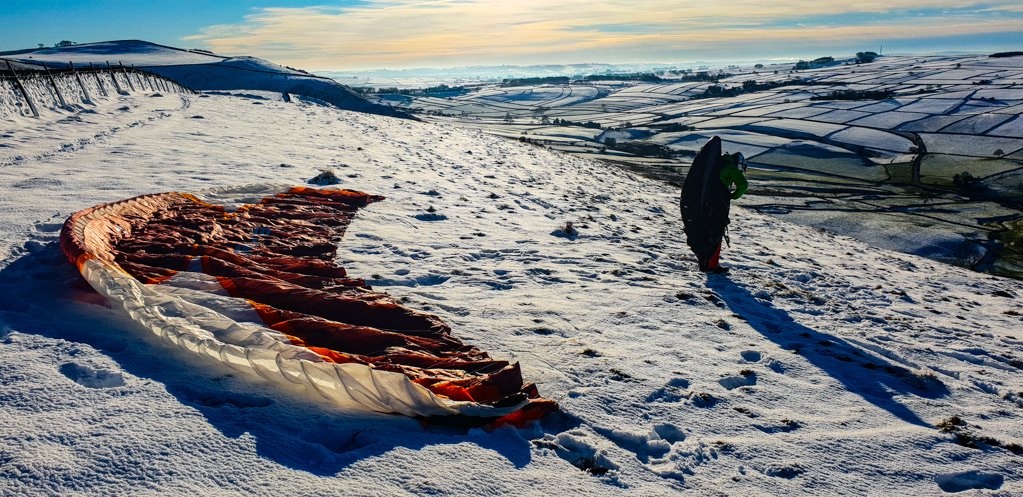
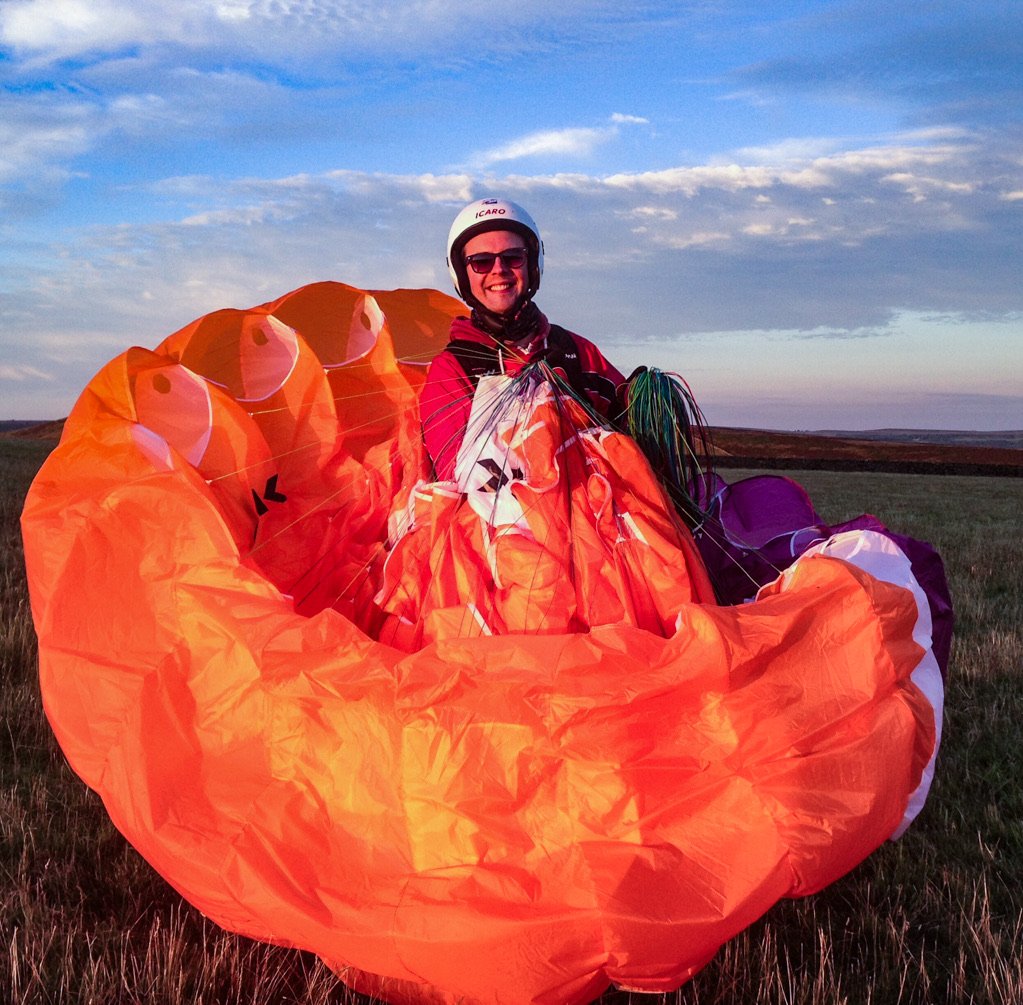
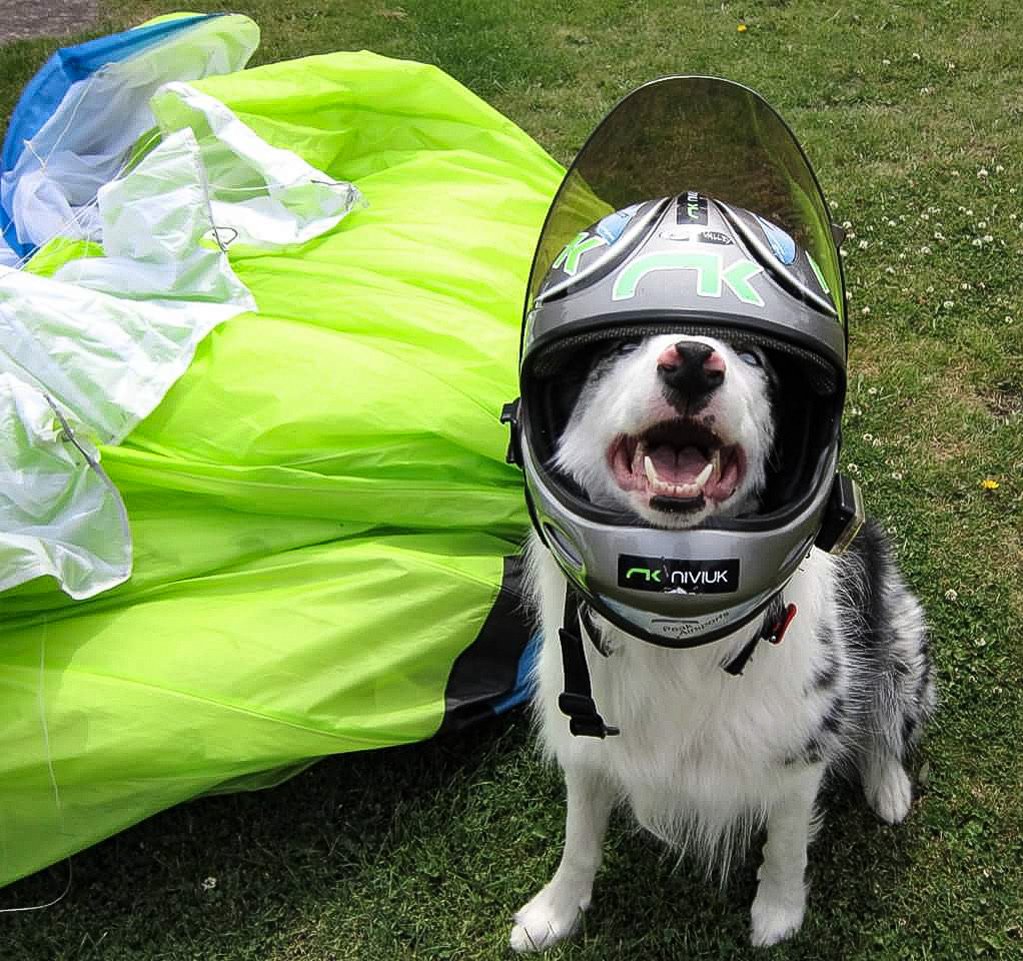
Please see our clothing and equipment page for information on what you should bring for our paragliding courses.
Peak Airsports
